Lahore: The City That's Killing Itself
Analyzing the trends in air pollution levels in Lahore, understanding the reasons behind it, and exploring what we can do to fix it.
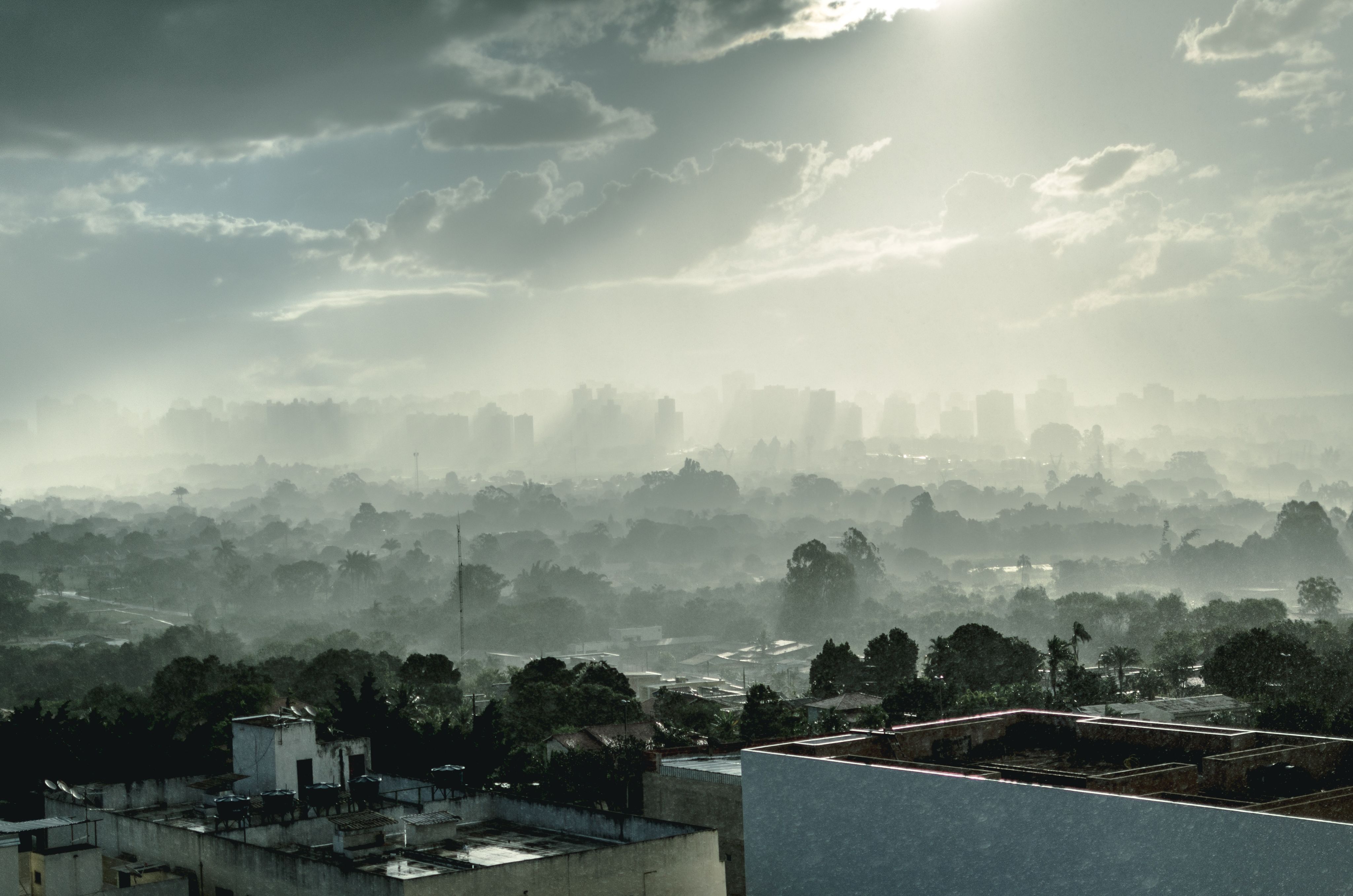
Lahore, a city home to nearly 11 million people, is in danger.
Numerous problems, ranging from Covid-19 to political instability to energy crises, threaten the health and livelihood of Lahore's citizens on a daily basis. However, it's most pressing problem, which is arguably the easiest to combat, is one that targets people indiscriminately.
Throughout November 2021, Lahore consistently won the title of the most polluted city in the world. With AQI levels reaching 200 on average daily, the city is quickly becoming unliveable. If we do not prioritise Lahore's air quality we risk facing a burden on our healthcare industry, hits to our agricultural and livestock sector, and mass emigration.
But how did we get here? And what options do we have?
This project seeks to visualise trends in air quality levels of Lahore, compare pollution levels to other cities in Pakistan as well as the rest of the world, and evaluate how we can tackle this life-threatening issue.
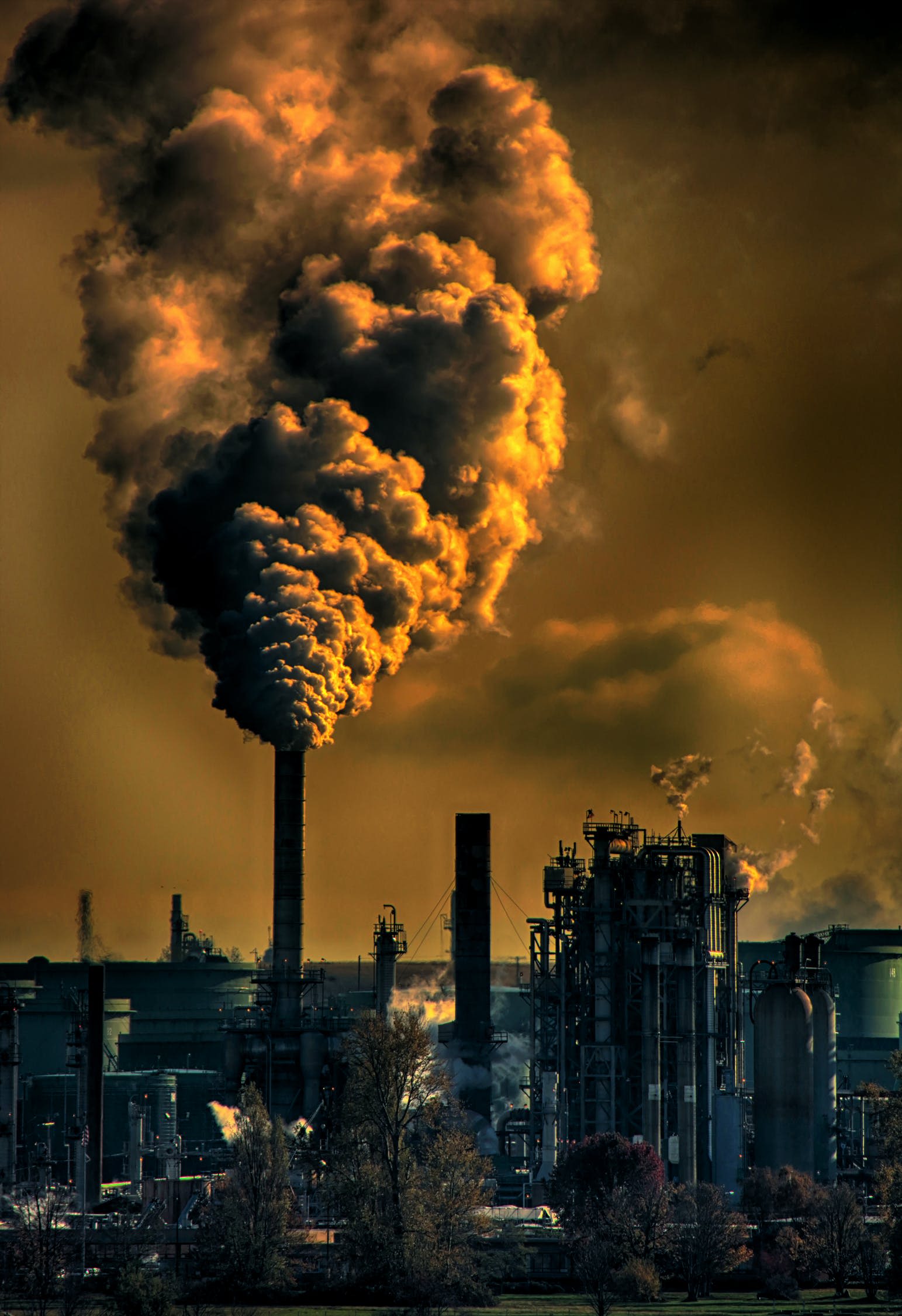
But first, what is AQI?
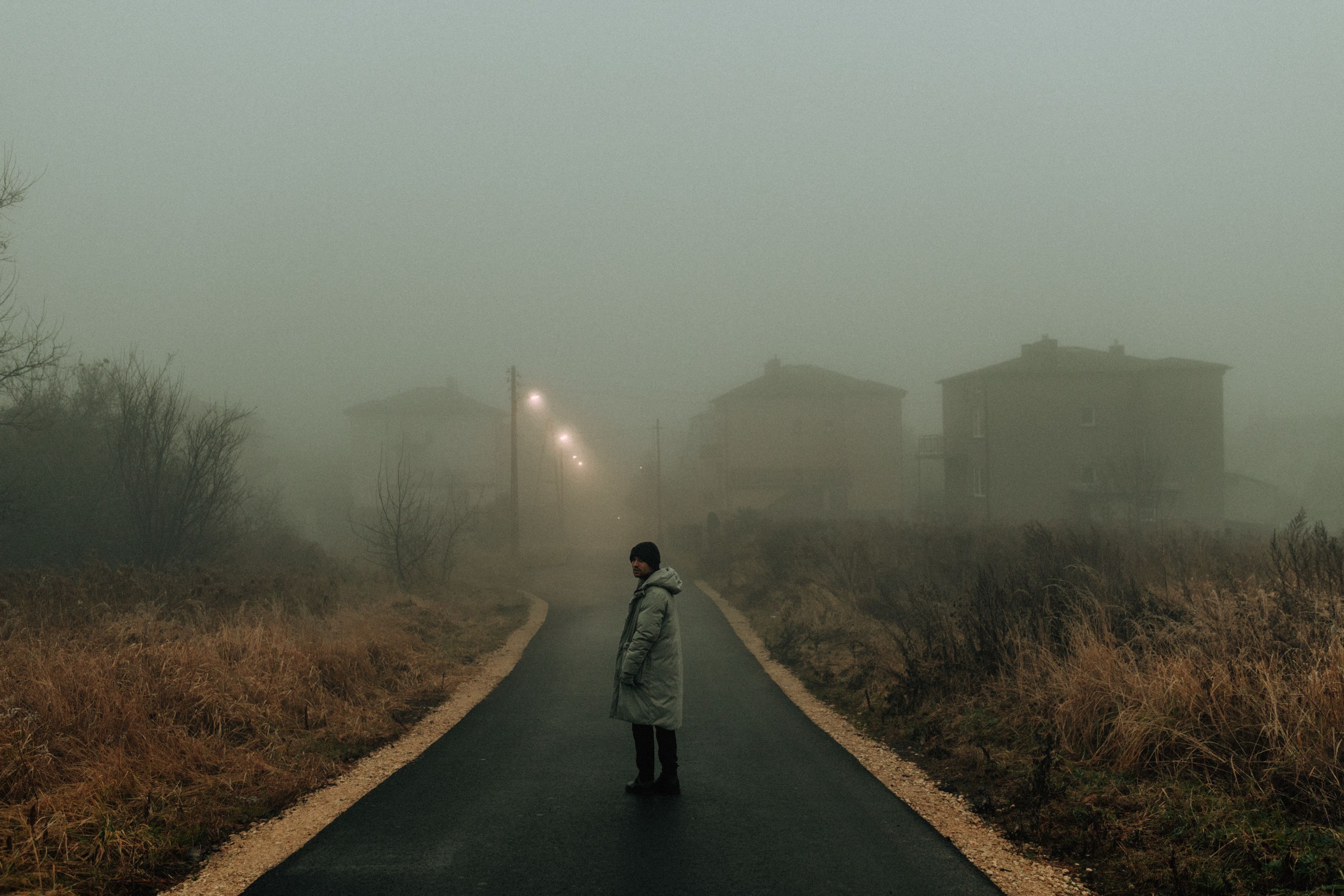

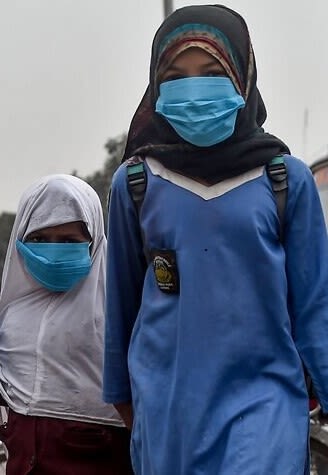
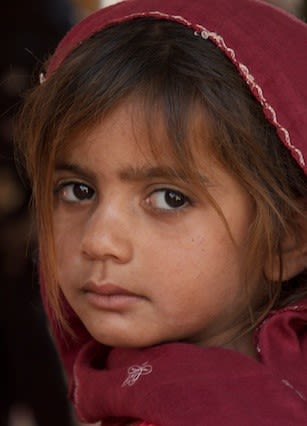
The Air Quality Index was first introduced by the U.S Environmental Protection Agency (EPA) and measures five major pollutants in the air.
PM2.5, O3, SO2, NO2, CO
The measurement of these pollutants is used to determine the AQI level. As indicated on the chart above, the value of AQI corresponds to a specific color. That color indicates to people how harmful the air would be to them.
Of the five major pollutants, fine particles, i.e., PM2.5, make up a large chunk of AQI. Particulate matter consists of sulfates, nitrates, and carbon and is found in almost every emission ranging from cars to burning organic matter. PM2.5 is a subset of particulate matter 30 times smaller than a human hair. Due to their small size, these particles can reach deep inside the lungs.
Short-term exposure to high levels of PM2.5 can cause sore throats, runny nose, and eye irritation. Long-term exposure can reduce lung function and increase the risk of high mortality illnesses such as lung cancer, chronic bronchitis, and heart disease.
According to a UNICEF report, in Pakistan, ONE in ten deaths in children under the age of five is caused by air pollution.
PM2.5 concentration is currently 5.9 times above the WHO annual air quality guideline value
Thus, Lahore risks facing a large burden on its healthcare sector owing to the fact that every citizen breathes more than the recommended amount of pollutants daily. Inhalation of polluted air is already contributing to the deaths of citizens. If we don't control AQI levels now, it is only a matter of time before Lahore becomes completely unliveable.
So...how did we even get here?
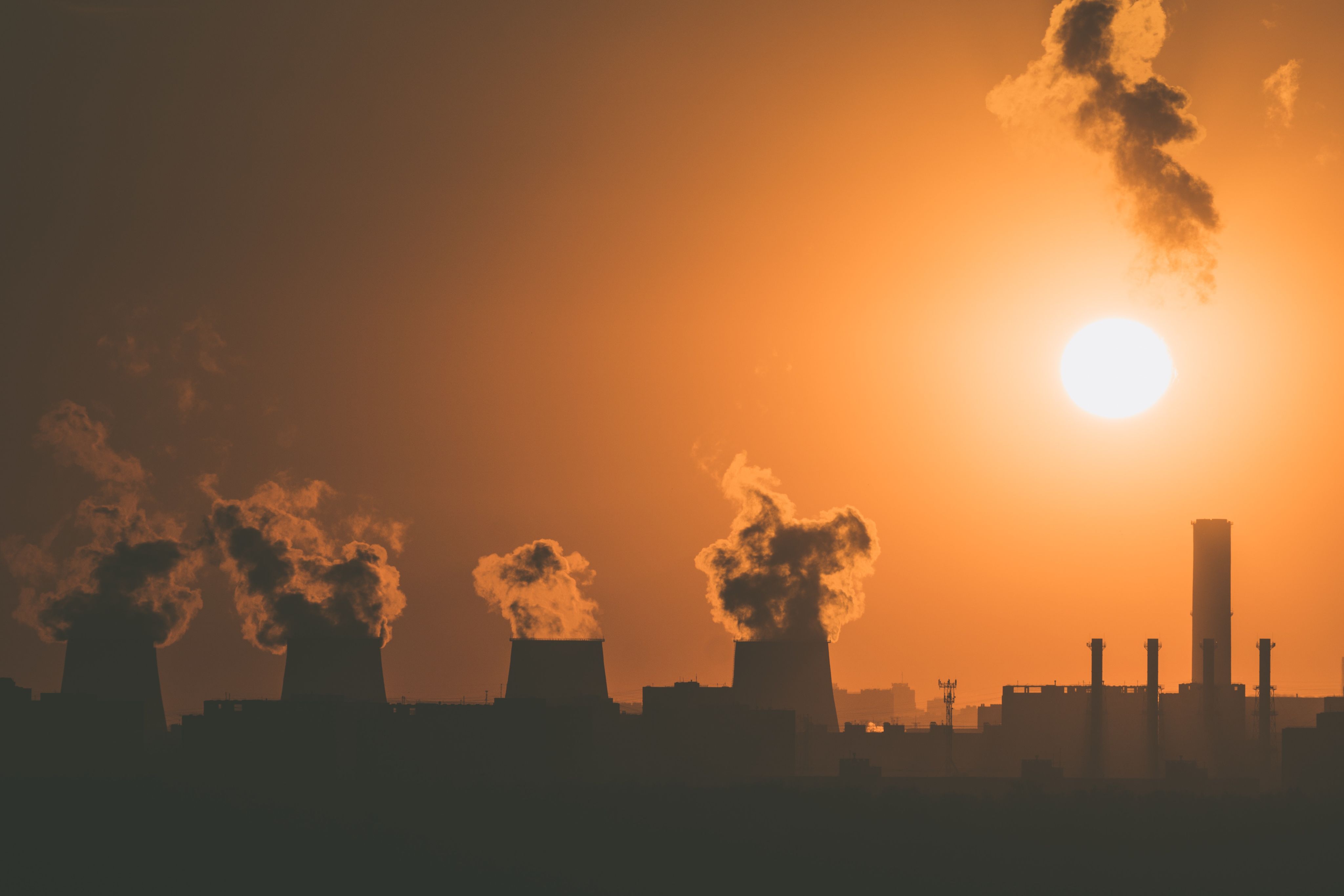
Lahore is the second largest city of Pakistan with an estimated population of 11.13 million citizens.
Located in the northern part of the plains of Punjab, Lahore is a major manufacturing site. Huge factories and corporations can be found in the heart of the city as well as lingering on it's outskirts.
As well as being a major industrial city, Lahore's geography places it in the middle of a huge agricultural province. Punjab, known for its fertile lands and ample water supply (punj-abb i.e five rivers) is an agrarian economy. While the city itself may not partake heavily in the agricultural sector, pollutants from neighbouring areas often make their way into the city.
Owing to the large scale manufacturing and agricultural industries in an around the city, its huge population and lack of effective emissions regulations, and deforestation and huge infrastructure projects, Lahore is regularly exposed to high levels of pollution.
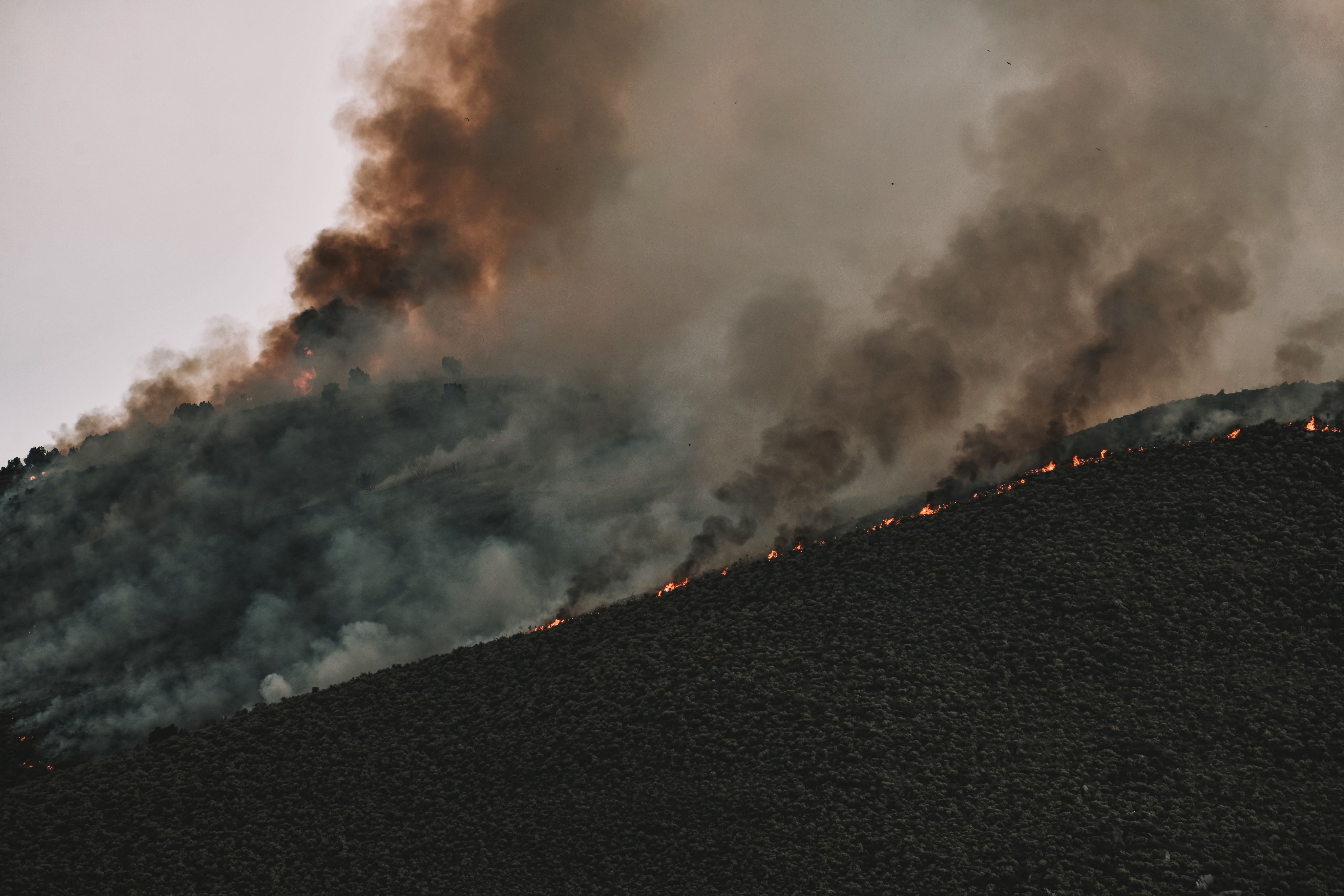
What exactly does data show?
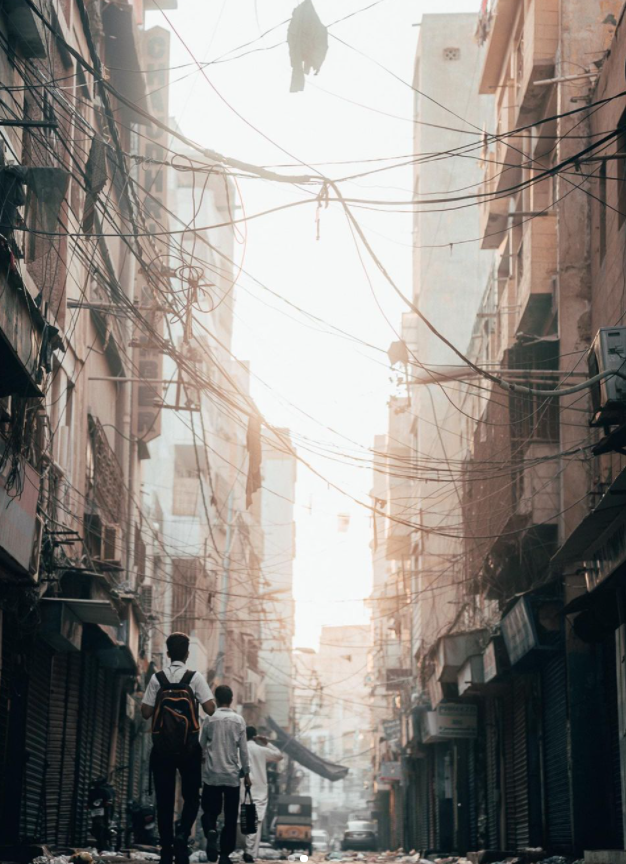
A bit about our data first...
As of December 2021, the Government of Pakistan has neither officially recorded nor published any data about the AQI levels of any city in the country.
All of our data sets were sourced from the U.S Embassy and Consulate as they are the only institution that officially monitors pollution levels in Pakistan.
Unfortunately, the data sets only date back to 2019, so this has limited the scale of our analysis. However, even with the limited data available we are able to establish a pattern in the AQI of Lahore.
The chart above depicts the daily PM2.5 levels of Lahore from 2019 to as recent as October 2021.
Firstly, we can see that regardless of the time of the year, Lahore's PM2.5 levels consistently remain above 50. According to the AQI index chart, Lahore's citizens should be at least moderately concerned about the air quality all year round.
This steady rate of high emissions can be attributed to vehicle emissions, smoke from brick kilns, stubble burning, and dust from construction sites. Worsening the state of the air quality is the increased level of deforestation in order to make way for big infrastructure and real estate projects.
The second, and more intriguing discovery from this visualization is that we can see peaks in PM2.5 levels around certain months.
Let's look further into that...
The following graph depicts the aggregate monthly PM2.5 levels of Lahore by year.
We can see that around April there is a sharp decrease in reported AQI levels.
And come September, AQI levels steadily start to rise.
Do the seasons impact the AQI?
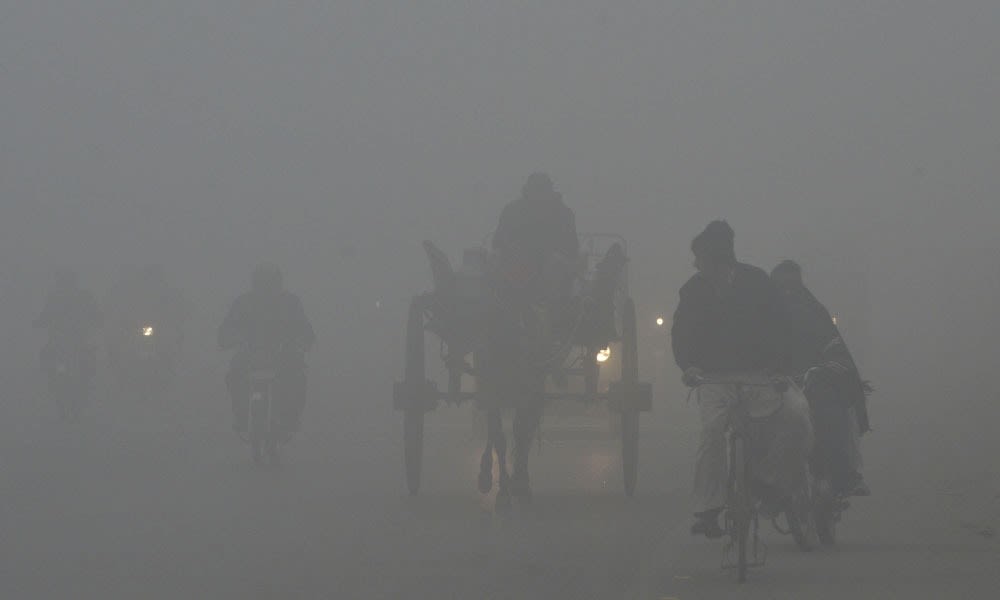
So what does this tell us?
While Lahore's air is regularly exposed to high amounts of pollutants, AQI levels increase drastically during the winter months.
In the months ranging from late-September to early-March, Punjab's farmers are busy with winter harvests. It is during this period that farmers set ablaze the remnants of their crops.
As described earlier, farming occurs on an extremely large scale in the province. The sheer volume of organic material burned adds a surplus of pollutant matter to the air, one that does not occur during the summer months.
This increase in volume is further worsened by the drop in temperature.
Winter air pollution is worse due to temperature inversion, which results in a layer of warm air that is prevented from rising trapping air pollutants.
According to the Provincial Disaster Management Authority of the Government of Punjab, pollutants tend to collect in the lower level of the atmosphere during the winter months due to rains, cold spells, and dry conditions.
Lahore, being situated on flat land, regularly experiences dense fog in its coldest months. The suspension of pollutants in the air plus the thick fog often combine to produce smog.
This unique meteorological event can only be found in cities that have met the the specific criteria that Lahore has.
Not only is smog dangerous to individuals who inhale it but it also limits visibility on roads which leads to an increase in accidents.
As spring approaches, temperatures start to rise and farmers no longer burn excess crops. During the monsoon season (July-August) heavy showers settle dust and pollutants in the air. For these reasons, PM2.5 levels are lowest in the city during the hotter months. However, once again it must be pointed out that Lahore's "low" pollution levels still average at around 100.
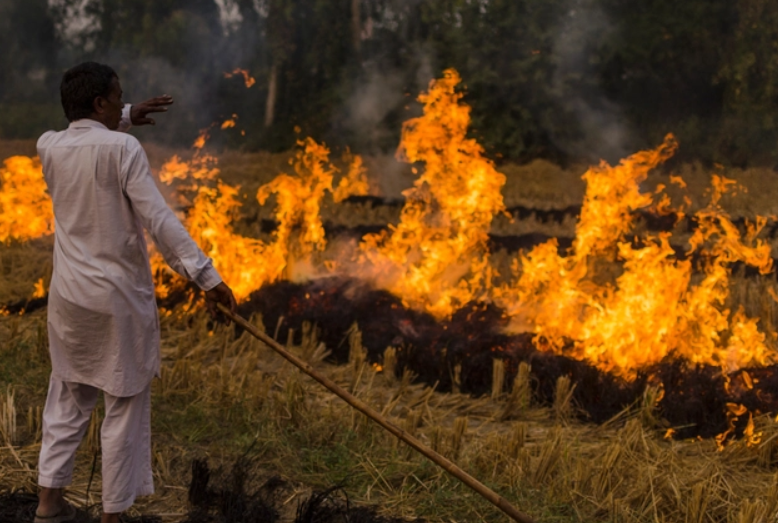
How has Covid-19 effected air pollution?

On 13 March 2020, Covid-19 was declared a global pandemic.
And so, manufacturing, travel, and construction came to a screeching halt in Pakistan.
The blue line represents the year 2020. We can see that after the month of April, PM2.5 levels fell drastically. Additionally, they stayed lower for much longer than they do in other years.
Lockdowns remained on and off in the country throughout the summer. People were travelling less, producing less, and building less. The drop in emissions is very clearly represented here.
Studies had shown reduced concentrations of PM2.5 (7.39%) during the lockdown. Moreover, it also decreased population-weighted concentration of nitrogen dioxide and particulate matter levels by about 60% and 31% in 34 countries.
How does Lahore compare to other cities?
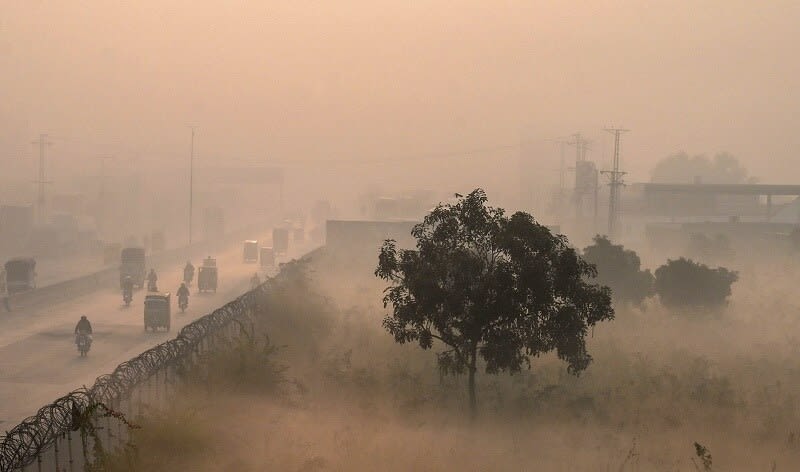
The level of air pollution has risen in Punjab over the past few years. Five cities in Punjab were listed among the ‘50 most polluted cities in the world in 2020. However, among all the cities of Punjab, the current situation in Lahore is most threatening, with its PM 2.5 (fine particulate level) repeatedly rising well above 40 times the World Health Organisation’s air quality guideline values as reported by international media. Within the next decade, Lahore might become a city where the AQI will reach such levels that this city will not remain inhabitable if air pollution remains on the rise at such dangerous levels.
The visualization on the right compares PM2.5 levels for 4 of the most populated cities in Pakistan. A simple glance tells us that while air pollution is a problem in all 4 of these cities, Lahore outranks all of them.
It must be addressed once again that our data sets for PM2.5 levels in these cities come only from the U.S. Embassy and Consulates. Thus they only monitor levels in Islamabad, Lahore, Karachi, and Peshawar; this has limited our analysis once again since we cannot compare pollution levels of other large cities in Punjab such as Sialkot and Faisalabad.
The reasons why air quality has been steadily declining in cities like Lahore are numerous. Vehicular emissions, industrial pollution, fossil fuel-fired power plants, the burning of waste materials, thousands of acres of crop fields, and coal being burned by thousands of brick kilns spattered across the province are all part of the problem. "Another factor that plays a key role is the lack of vehicular fitness and emissions testing, alongside the use of poor-quality fuel, which have compounded the city’s air pollution problem," said Hammad Naqi Khan, director-general of World Wildlife Fund-Pakistan.
Overall, “The smog in Lahore is caused by a confluence of metrological and anthropogenic factors,”
Namely, temperature inversion traps pollution in the atmosphere, which—alongside seasonal crop burning within the boundaries of Lahore and on the Indian-Pakistani border—combines with other sources of year-round pollution and fog to cause a spike in pollution and winter smog. This air pollution and smog give rise to many serious health concerns.
Other major cities of Pakistan might be heavily populated, industrialized, and have many motor vehicles. Still, these unique metrological and anthropogenic conditions make Lahore the most susceptible to high pollution levels.
How does Pakistan compare to the rest of the world?

Pakistan was ranked the second most polluted country in the world in terms of the population density of areas with high concentrations of dangerous airborne pollutants, according to a report on world air quality released by Swiss company IQ Air.
94 out of 100 most polluted cities in the world are in India, China, and Pakistan.
The graph above shows the comparison of the mean annual PM 2.5 levels of Pakistan with other countries. The graph clearly shows that even in 2017 Pakistan was among the top three polluted countries in the world, moreover, the situation has gotten much worse in recent years. The data used was taken from the World Bank.
The World Air Quality Index 2019 listed nine Pakistani cities in the top 250 most polluted cities in the world based on the presence of fine particulate matters in their air.
In accordance with the World Health Organization's guidelines, the air quality in Pakistan is considered unsafe - the most recent data indicates the country's annual mean concentration of PM2.5 is 58 µg/m3, exceeding the recommended maximum of 10 µg/m3. The countries with clean air have PM2.5 close to 5-6 µg/m3, and as compared to these countries the mean concentration of particulate matter of Pakistan is approximately 11 times higher.
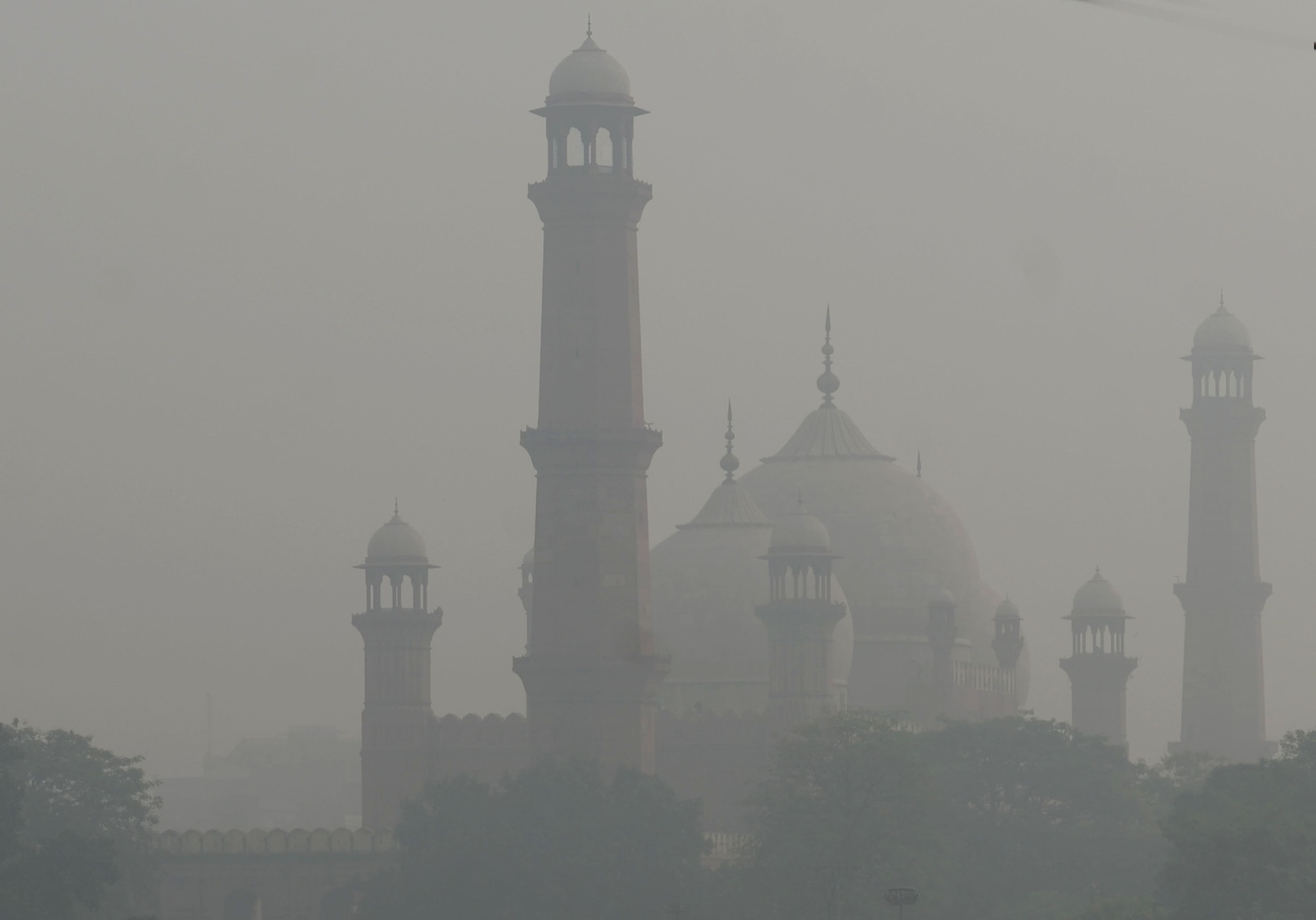
So...what has the government been doing?
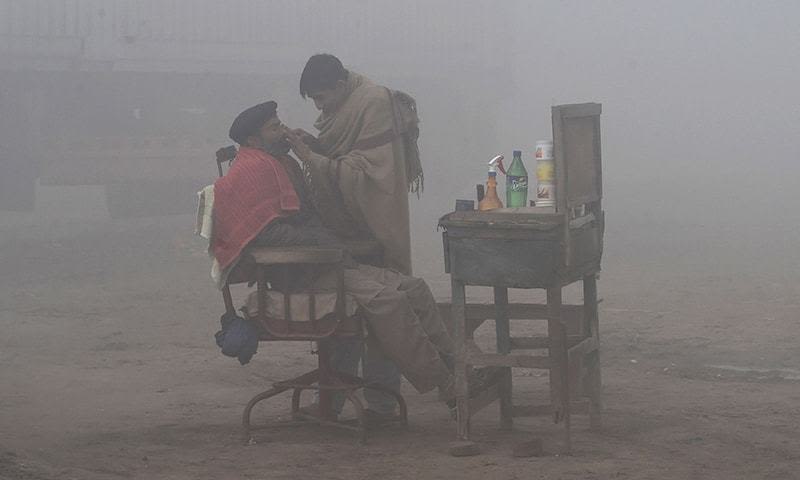
The government has been slow to react to the pollution problem. In 2019, Pakistan’s minister of climate change infamously dubbed growing concern about the smog problem in Lahore as being a "conspiratorial attempt to spread misinformation". Many officials and politicians never stop blaming stubble burning by Indian farmers as the main cause of Lahore’s smog problem. Blaming India is not an accurate assessment because the wind patterns are ever-changing, however, the bad air quality remains constant.
Ahmad Rafay Alam, an environmental lawyer, said the city was producing the same amount of pollution every single day throughout the year and government agencies’ action in the winter season was nothing but a “panic response”. Every single year the time when smog arrives, the government takes hasty actions and ignores the main issue.
Moreover, another contributor that prevents the public to be aware of the hazardous situation is the lack of monitoring stations. IQ Air said that Pakistan had doubled its monitoring stations, but more than 90% of the data for air quality was still owed to individual contributors. As stated earlier, the Government of Pakistan does not publish the data of AQI levels online. In addition, there is a lack of air quality monitoring and data in remote areas.
On the other hand, Punjab’s minister for environment protection has simultaneously asked law enforcement agencies to act against private individuals or companies issuing unauthorized air quality data, which he feels is harming the country’s reputation.
Activism, monitoring, and reportage by local and international agencies for the last few years have at last compelled Punjab’s government to pay attention to Lahore’s pollution problem. The provincial Environment Protection Department is now tracking and reporting air quality data, but this data is still unreliable, patchy, and based on a handful of air quality monitors.
The provincial government also has several rules on the books that enable it to measure and fine polluters. However, there are no set laws or acts that are in implementation over the country. Moreover, there is a lack of capacity and resolve to ensure effective enforcement due to contradictory positions adopted by those in charge to deal with the problem.
Decision-makers in Lahore focus on Band-Aid solutions; for example, on particularly pollution-heavy days, offices and schools are closed to lessen human exposure and reduce traffic emissions. Moreover, actions are taken against the farmers who are involved in stubble burning.
"These punitive actions against softer targets may be visible, they will remain ineffective if other major sources of air pollution are not addressed.”
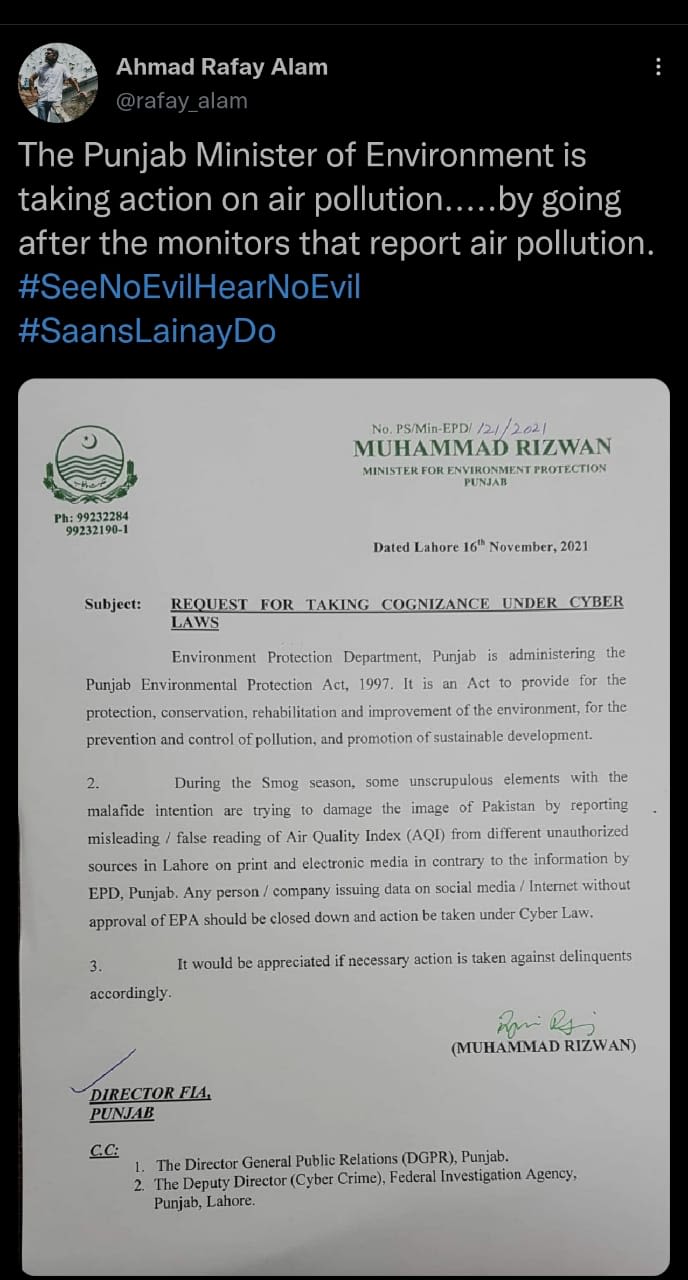
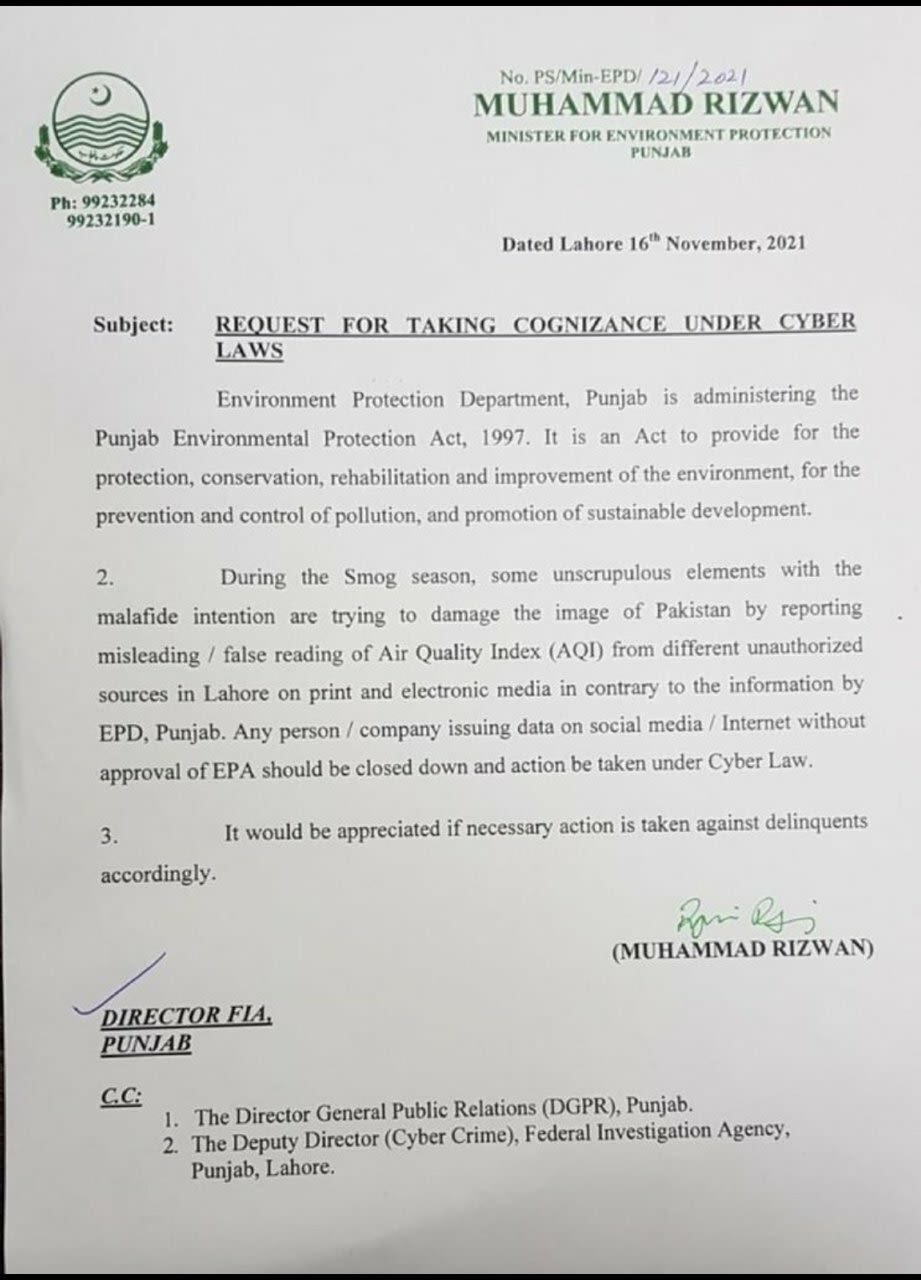
The way forward!

Pakistan will have to deal with the issue of air pollution as a crisis, and we need short-term, medium-term, and long-term changes.
In the medium and long term, the Government's goals should target the 3 major sources of pollutants in the city. Motor vehicles, the industrial sector, and the agricultural sector.
The Government should invest more in public transit systems so that there are less vehicles on the road producing emissions. Additionally, vehicles that produce emissions can be taxed heavily to discourage their use by citizens and further motivate them to use public transport. Simultaneously, incentives such as increasing the number of charging stations around the city as well as discounts, can be given to people to encourage the purchase and use of electric or hybrid cars.
Next the Government needs to implement standards of pollution emissions on industries like steel and brick manufacturing plants. Incentives can be given to reduce the volume of pollutants or taxes can be placed on manufacturers that exceed Government criteria.
Lastly, farmers need to be accommodated during the winter harvest. Farmers choose to burn their left over crops before planting their next batch as it is an easier and cheaper way to get rid of the remnants. In this case, the Government can provide farmers with monetary or capital incentives that will encourage them to clear out their land without burning it.
Air quality is at hazardous levels, and more robust policy response is needed.
To address the issue of pollution, there are numerous tools that the Government can use. These include inter alia:
— Introduction of cleaner fuels in transportation and power generation;
— Provision of subsidy and/or grants for the adoption of cleaner fuels and newer technology;
— Emissions Trading Systems (or ‘cap-and-trade’ systems). These are specific to carbon emissions;
— Mandating targets for the sale of electric and hybrid vehicles.
It is thus the Government's job to crackdown on major polluters and put an end to air pollution in the city. However, as individuals we will still be inhaling these pollutants until the Government is successful in its action. As described above, the Government itself fails to recognise the severity of the issue at hand and thus this has slowed any progress we should be making. Citizens of Lahore have been organising protests such as the recent march on the 9th of November to put pressure on the Government to take swift action. But, in the mean while, citizens should be taking whatever precautions they can to protect themselves.
In the short term, we must encourage all the citizens to take charge of their own health and well-being to the best of their abilities. Some simple measures that we must take include: purifying the air in places where they spend most of their time, such as homes and offices. Invest in air purifiers; there are many low-cost but effective local options. In addition, if your work involves significant time outside, then there can only be good that would come out of wearing a mask. An N95 or K95 mask would be ideal for this purpose.
Other industrialised countries were once in the same position as we are right now.
The USA strictly followed the Clean Air Act for more than forty-five years. By sticking to the CAA, the country has successfully lowered health risks, reduced environmental damage, cut down interstate pollution, and made mobile and industrial pollution less toxic. The benefits of the Clean Air Act have far exceeded the costs. Similarly, Pakistan can successfully cut down the hazardous levels of air pollution in Lahore and other cities if the laws and acts are implemented correctly and followed consistently.
And it is possible! Taking direct action can reduce air pollution levels by a huge margin in a very short amount of time. The photos on the right were taken during the April-May lockdown period in Lahore and show crystal clear blue skies. This just goes to show that achieving clean and breathable air is not an impossible task.
“Lahore needs a multipronged approach to contend with its environmental woes, including air pollution, which in turn necessitates attention to improved urban planning as well.”
Today, in the absence of any efforts to combat serious air pollution, Lahore, once known as the “city of gardens,” is not breathing in toxic air. Unfortunately, the city full of culture, history, and life is now invisible, hidden under a thick smog. We should realize how serious this problem is rather than gasping for one breath of oxygen. Lahore’s 11 million residents who are bracing themselves for the smog that has now become the “fifth season” should act until it’s too late.
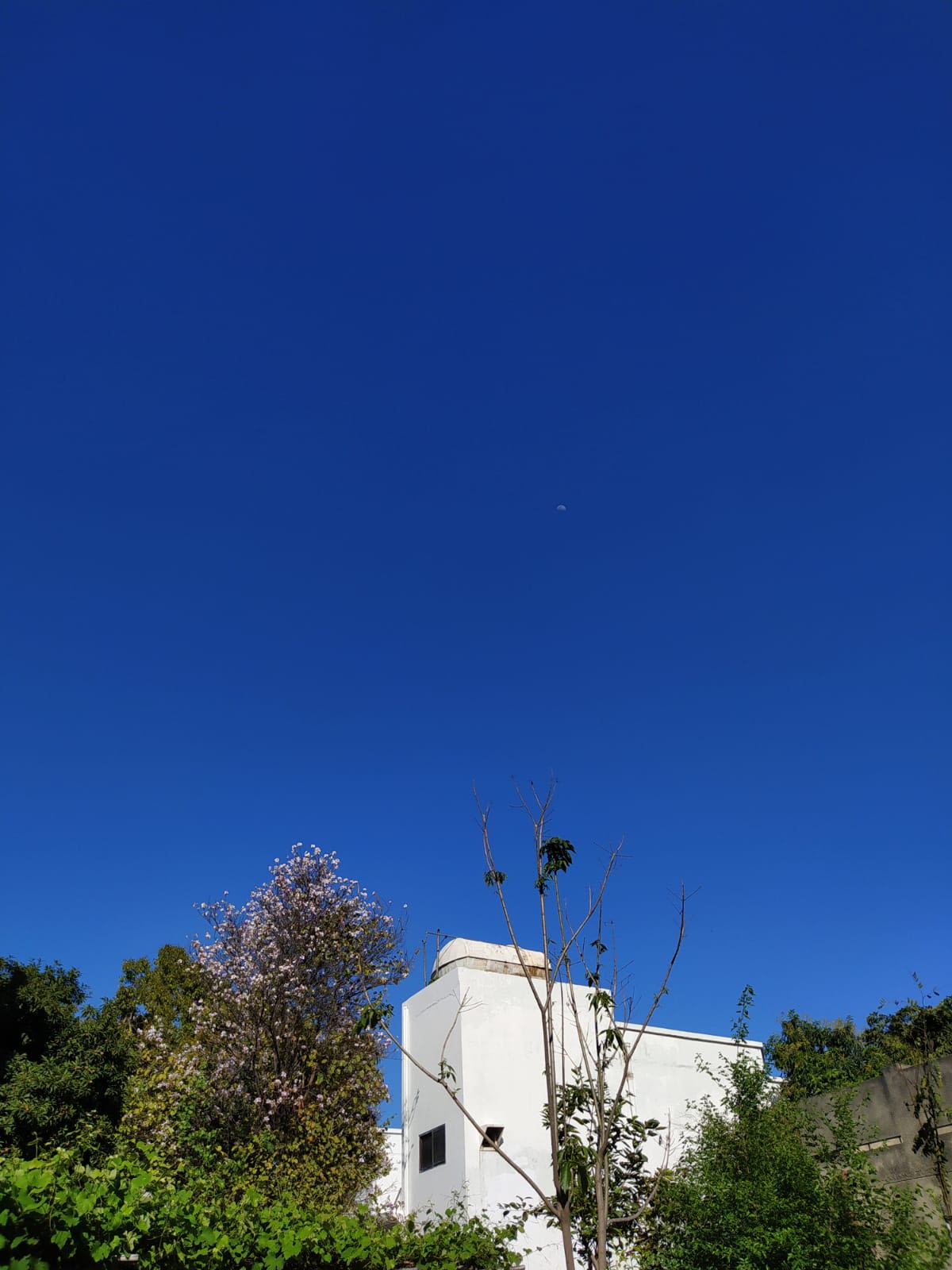
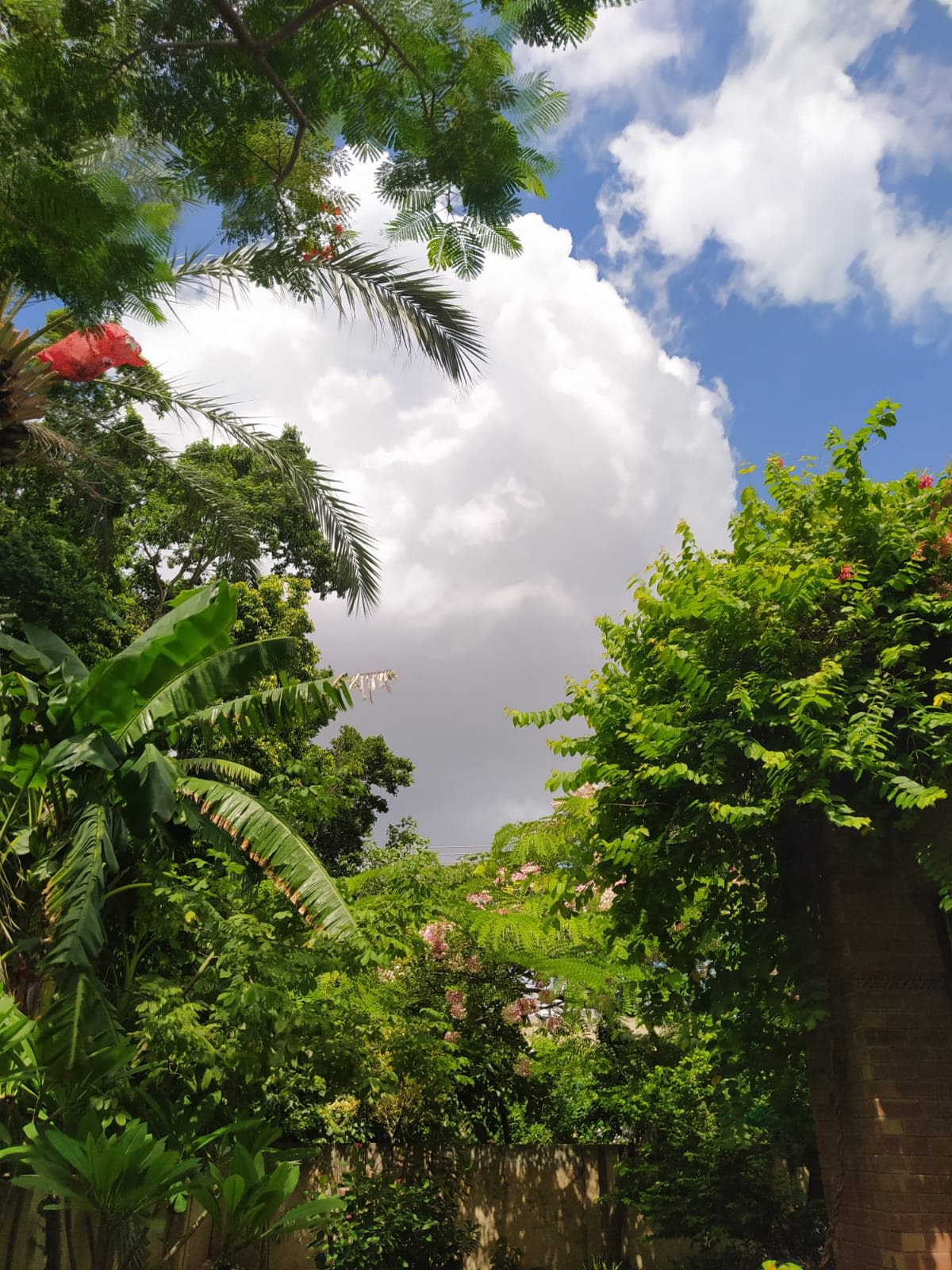
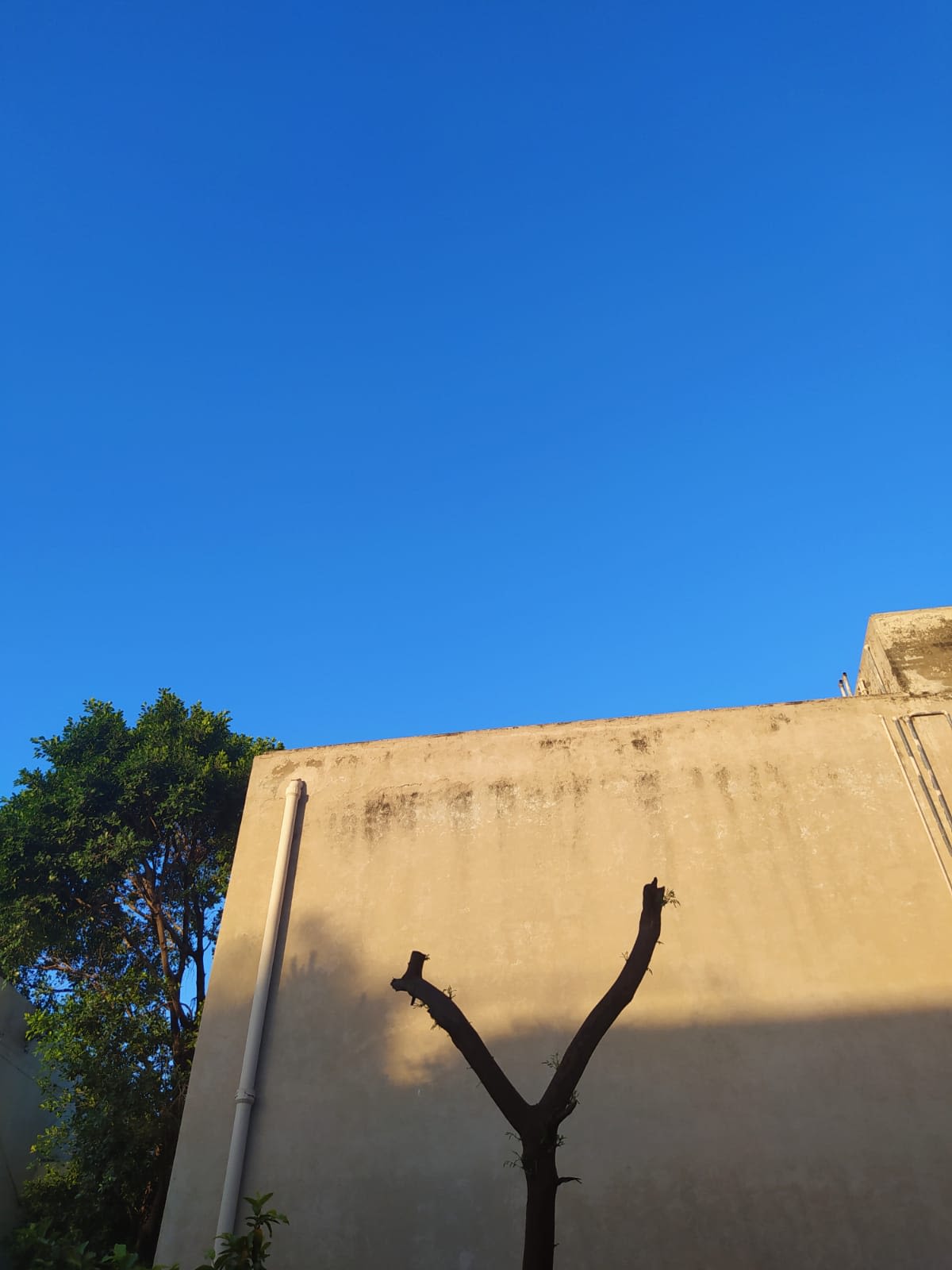
Before we end this...we conducted a survey to gauge how many individuals have taken individual steps against air pollution. We received a total of 72 responses. Here is what we found.
Almost 88% of our surveyors did not have an air purifier.
Of the 72 responders, 72% lived in a highly polluted area but only 13% owned an air purifer. As elaborated upon above, the risks to the human body when exposed to high levels of pollutants is insurmountable. Thus, we must take every precaution that we can at an individual level to prevent harming ourself indoors at least. And so using air purifers is an unfortunate but extremely necessary investment. Regardless of their different price points, air purifiers are above the income level of many of the 11 million citizens of Pakistan. In a country where the average annual household income is a mere 600 USD, a 100USD air purifier is an unthinkable expense. Thus, the Government should provide subsidised or free of cost air purifiers to citizens.
However, if you wish to purchase an air purifier, you can click the button below.
Additionally, to make sure you aren't breathing the hazardous air outdoors, click below to buy an N95 mask.

WORK CITED PAGE
https://www.aljazeera.com/news/2021/12/3/pakistan-lahore-tops-most-polluted-cities-list
https://www.pca.state.mn.us/air/about-air-quality-data
https://www.niehs.nih.gov/health/topics/agents/air-pollution/index.cfm
https://www.health.ny.gov/environmental/indoors/air/pmq_a.htm#:~:text=Particles%20in%20the%20PM2.5%20size%20range%20are%20able%20to,nose%20and%20shortness%20of%20breath.
https://www.dw.com/en/why-pakistan-has-some-of-the-most-polluted-cities-in-the-world/a-59686579
https://nation.com.pk/14-Nov-2021/lahore-air-quality-index-crosses-worst-levels
https://aqicn.org/city/pakistan/lahore/us-embassy/
https://www.iqair.com/pakistan/punjab/lahore
http://pdma.gop.pk/smog
https://aaqr.org/articles/aaqr-20-10-covid-0597#:~:text=Air%20quality%20during%20the%20COVID,role%20played%20by%20the%20meteorology.
https://www.pnas.org/content/117/32/18984
https://www.aljazeera.com/news/2021/12/3/pakistan-lahore-tops-most-polluted-cities-list#:~:text=%E2%80%9CAir%20pollution%20in%20Lahore%20is,lawyer%20Ahmad%20Rafay%20Alam%20said.&text=Pakistani%20authorities%20blame%20industrial%20emissions,pollution%20and%20smog%20in%20Lahore.
https://www.thenews.com.pk/latest/619608-pakistan-second-most-polluted-country-in-the-world-in-terms-of-air-quality-claims-report
https://www.thenews.com.pk/print/913179-how-lahore-became-world-s-most-polluted-city
https://www.dawn.com/news/1656857
https://www.epa.gov/clean-air-act-overview/progress-cleaning-air-and-improving-peoples-health
https://www.ceicdata.com/en/indicator/pakistan/annual-household-income-per-capita

